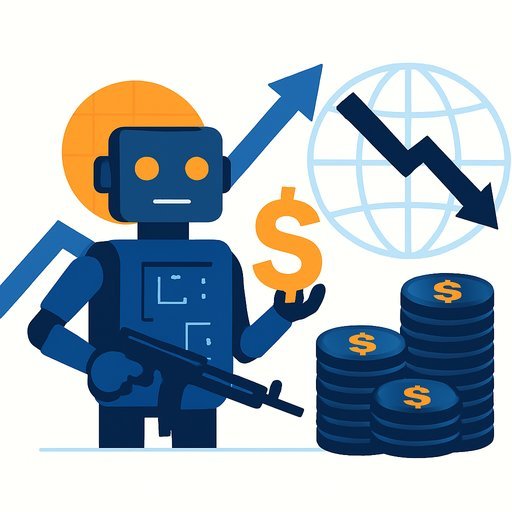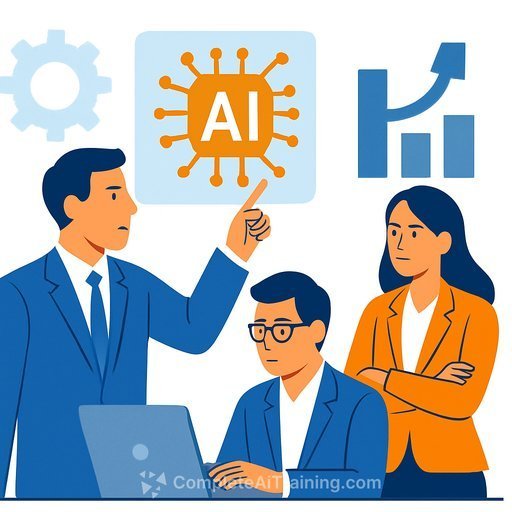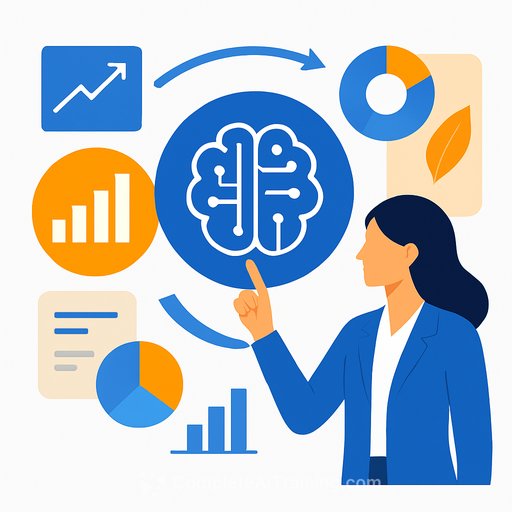Eli Lilly's CEO Runs AI in Every Meeting. Here's the Playbook Behind That Decision
In pharma, small decisions stack into billion-dollar outcomes. That's why Eli Lilly's CEO, David Ricks, keeps "at least one or two AIs running" in every meeting-treating AI like a standing advisor, not a gadget.
Ricks favors xAI's Grok and Anthropic's Claude over ChatGPT for science. "I use either Claude or xAI. I find it more terse. The references actually check out more often," he said, reflecting Lilly's bias for accuracy in technical debates.
AI as a Meeting Staple
The method is simple: ask complex scientific questions in real time, pressure-test assumptions, and keep the discussion anchored to current evidence. This approach fits a company riding a wave of innovation, from obesity treatments like Mounjaro and Zepbound to a valuation near $1 trillion.
For executives, the takeaway is clear. Put a model in the room to compress research time and flag weak claims. Treat it like a second brain with instant recall-and a habit of asking better questions.
Supercomputing for Drug Innovation
Lilly's October 2025 partnership with Nvidia targets what they call pharma's most powerful AI supercomputer, powered by Nvidia chips and 100% renewable energy. The goal: faster discovery cycles and better model performance across the pipeline.
In September 2025, Lilly also launched an AI platform to share drug discovery models with biotech partners, trained on decades of internal data. That move broadens access while raising the floor on model quality in preclinical work.
Enterprise-Scale AI: Beyond R&D
This isn't confined to the lab. Lilly is extending AI into manufacturing, medical imaging, supply chain logistics, and enterprise agents that speed up molecule validation and operational decisions. The message: AI belongs wherever time-to-decision and error rates matter.
According to investor updates, these capabilities are intended to "supercharge medicine discovery and delivery for patients," with systems built to support both discovery and execution.
Executive Leadership in the AI Era
Lilly reshaped its executive committee in November 2025 to support the next phase of growth. That governance shift matches Ricks' day-to-day use of AI: augment people first, then scale processes and infrastructure around them.
Public reaction has been positive. Posts on X called out Ricks' live use of Grok and Claude in meetings as a signal of where boardroom workflows are heading; even Elon Musk noted it was "cool" to see Grok as a daily advisor.
Sentiment from Tech and Pharma Circles
Leaders across tech have echoed the momentum. Larry Ellison has praised AI's problem-solving speed, and Microsoft AI's Mustafa Suleyman expects models with persistent memory by the end of 2025-pushing more work into autonomous, context-aware agents.
Lilly's November 2025 deal with Insilico Medicine-$100M+ to pursue new targets with generative AI-adds more surface area for discovery and validation.
The Constraint: Biology We Don't Know Yet
Ricks is realistic about limits: "We only know about 15% of human biology, so that's all the data we're working with." The gap isn't just volume-it's quality.
Critics point out that much of today's data is disjointed, unvalidated, and non-standardized. Lilly's supercomputing push is, in part, a data strategy: generate cleaner datasets, enforce standards, and create feedback loops that improve models over time.
What Executives Can Copy Now
- Put AI in the room: Run an assistant model in key meetings. Use it to query claims, summarize live, and compile follow-ups.
- Pick the right model for the job: Test response quality on your use cases. For science-heavy queries, leaders report strong performance from Claude and Grok.
- Build a context layer: Connect models to your internal docs, trial data, SOPs, and dashboards. No context = generic answers.
- Fix the data first: Standardize schemas, de-duplicate sources, and set validation rules. "Garbage in, garbage out" is not a cliché here-it's a balance sheet risk.
- Stand up AI governance: Define model selection, approval flows, audit trails, and human-in-the-loop checkpoints for high-stakes decisions.
- Invest in infra where it pays: For discovery and operations, GPU access and retrieval pipelines are now core utilities, not nice-to-haves.
- Upskill your operators: Train teams on prompting, verification, and scenario testing. The tool only scales as fast as the people using it.
- Partner with focus: Use external models and platforms to accelerate sprints, but keep IP, data quality, and evaluation in your control.
- Measure what matters: Track cycle time, error rates, and decision latency. Tie AI to a financial outcome or it will become a demo habit.
Market Impact and Forward View
As of November 2025, Lilly's stock reflects confidence in its AI posture, with valuation discussions nearing the $1T mark. If AI systems gain persistent memory and stronger autonomy, expect faster progress in areas like obesity and diabetes-where speed to insight compounds advantage.
Beyond Meetings: Pipeline and Therapy Areas
Lilly's AI buildout stretches into pain management and other domains, with the Nvidia partnership expected to compress development timelines and sharpen candidate selection. The broader theme: apply AI where the time-cost of a decision is highest.
Bottom line for executives: Treat AI as a daily partner, not a quarterly initiative. Start in the meeting, wire it into your data, then scale into infrastructure, governance, and partnerships.
For investor communications and updates from Lilly, see their investor relations hub: Eli Lilly Investor Relations.
If you're building an AI upskilling plan for your leadership team, explore role-based options here: Complete AI Training: Courses by Job.
Your membership also unlocks:






